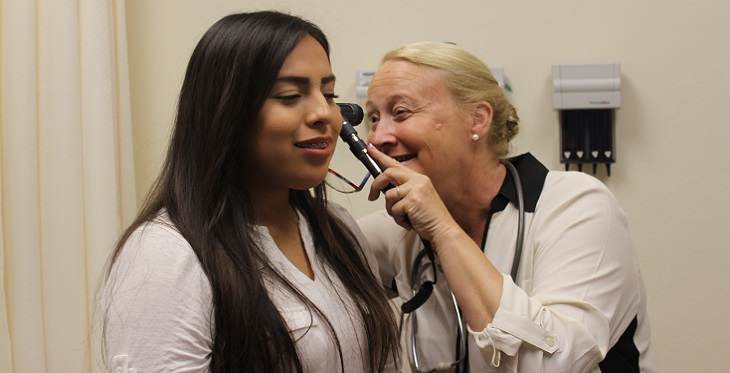People living with disabilities face poorer overall health outcomes than their peers without disabilities. Could accessible telehealth help?
Dr. Tamsen Bassford, associate professor in the Department of Family and Community Medicine and a member of the University of Arizona College of Medicine - Tucson Sonoran Center for Excellence in Disabilities, says many of her patients were severely impacted during times of isolation during the COVID-19 pandemic, when shutdowns and social distancing were in place.
“Many of my patients with intellectual developmental disabilities (IDD) were restricted; they couldn’t go to work or go to their daytime activities – they were at home. They didn’t have access to things that made their days meaningful. Many patients had less access than neurotypical people have to online resources,” Dr. Bassford said.
Disparities in health care during the pandemic is not the first time people living with disabilities have faced inequity.
According to a recent study in Health Affairs about physicians’ perceptions, “researchers found only 40.7 percent of physicians were very confident about being able to provide equivalent quality of care to patients with disability. About half (56.5 percent) strongly agreed that they welcomed patients with disability into their practices, while 18.1 percent strongly agreed that these patients are often treated unfairly by the health care system.”
In a related study published in Health Affairs, more than one-third of U.S. physicians report knowing little or nothing about their legal responsibilities to patients with disability under the Americans with Disabilities Act (ADA).
The researchers found “that 35.8 percent of physicians reported knowing little or nothing about their legal responsibilities under the ADA. Overall, 71.2 and 20.5 percent of the physicians, respectively, answered incorrectly about who determined reasonable accommodations and incorrectly identified who pays for these accommodations. In addition, 68.4 percent felt that they were at risk for ADA lawsuits.”
Dr. Bassford says there are disparities not only when it comes to physicians’ perceptions or knowledge of ADA laws, but also in other areas.
“People with IDD suffer from health disparities in the preventative area, as well. As far as cardiovascular health, obesity and diabetes, people with IDD are less likely to be offered preventative screening services or be asked about their diet and exercise,” Dr. Bassford said. “And people with intellectual disabilities had higher rates of hospitalization for COVID-19 and higher rates of death from COVID-19, but they were never prioritized for vaccines during that period of time.”
Dr. Bassford says knowing that, she had to carefully weigh whether her need to see her patients with disabilities was more important to their health than the risk of contracting COVID, and found televisits for many of her patients were very helpful.
“During times when you can’t be seen face-to-face, telehealth was an important tool we could use with patients,” said Dr. Bassford. “Some of my patients preferred having a telemedicine visit – being online or on the telephone was more comfortable for them.” She added that many people with disabilities have transportation issues as well, and telemedicine can be a solution.
But Bassford added there were challenges pivoting to televisits during the pandemic. Many of her patients are unable to express subtle nuances via video or telephone visits. Also, in terms of access, people with disabilities are overrepresented in lower socioeconomic groups, so they may not have access to a computer or a smartphone. Some telehealth interventions targeted at people with developmental disabilities require a nurse, health aide or parent caregiver to assist with the health provider interaction.
Equal access to telehealth can be achieved by modifying procedures and providing additional support to patients with disabilities before, during and after a virtual visit, according to the U.S. Health Resources and Services Administration (HRSA), which provides guidelines on how to make sure telehealth is accessible for people with disabilities.
A few tips HRSA offers on their website dedicated to telehealth:
- Prior to the appointment, send pre-visit materials and assess patient accessibility and the patient’s technological situation.
- Consider making the format of the patient materials available as audio recordings or Braille.
- Contemplate telehealth platforms that include accessibility features such as live captions or high-contrast displays. It’s possible these options are available on your current platform and have not been enabled.
“Telemedicine is an important tool in the toolkit,” said Dr. Bassford. But to make it an effective tool, she added, “Understand what a person’s communication needs are. Communication and translation in general need to be a part of any telehealth visit.”


